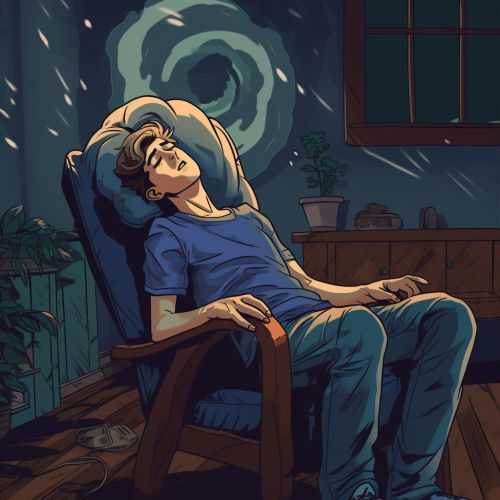Narcolepsy
Overview
Narcolepsy is a chronic neurological disorder that affects the brain's ability to control sleep-wake cycles. People with narcolepsy experience periods of extreme daytime sleepiness and sudden, irresistible bouts of sleep that can strike at any time. These "sleep attacks" usually last a few seconds to several minutes.


Symptoms
Narcolepsy is characterized by excessive daytime sleepiness (EDS), cataplexy, hypnagogic hallucinations, and sleep paralysis.
Excessive Daytime Sleepiness
EDS is often the first symptom to appear, and it is the most universally experienced symptom among people with narcolepsy. EDS is characterized by persistent sleepiness, regardless of how much sleep an individual gets at night.
Cataplexy
Cataplexy is a sudden and uncontrollable muscle weakness or paralysis that affects the entire body. This symptom is triggered by intense emotions such as laughter, surprise, or anger. Not all people with narcolepsy experience cataplexy.
Hypnagogic Hallucinations
Hypnagogic hallucinations are vivid, often frightening, dreamlike experiences that occur while falling asleep. These hallucinations may also occur upon waking up and are known as hypnopompic hallucinations.
Sleep Paralysis
Sleep paralysis is the inability to move or speak while falling asleep or upon waking. These episodes can last a few seconds to several minutes.
Causes
Narcolepsy is believed to be caused by a deficiency in the production of a brain chemical called hypocretin, also known as orexin. This chemical regulates arousal, wakefulness, and appetite. The exact cause of this deficiency is unknown, but it is believed to be a combination of genetic and environmental factors.
Diagnosis
Diagnosis of narcolepsy can be challenging, as symptoms can be similar to other sleep disorders such as sleep apnea and insomnia. A clinical examination, detailed medical history, and specialized tests such as a polysomnogram and multiple sleep latency test are typically used to diagnose narcolepsy.
Treatment
While there is no cure for narcolepsy, symptoms can be managed with medications and lifestyle changes. Stimulant drugs are often prescribed to manage excessive daytime sleepiness, while antidepressants and sodium oxybate can help manage cataplexy. Regular exercise, maintaining a healthy diet, and avoiding caffeine and alcohol can also help manage symptoms.
Epidemiology
Narcolepsy affects both men and women equally, and symptoms often start in childhood or adolescence. However, many people with narcolepsy are not diagnosed until adulthood. Narcolepsy is estimated to affect about 1 in 2,000 people in the United States.
Impact on Quality of Life
Narcolepsy can have a significant impact on a person's quality of life. Excessive daytime sleepiness can make it difficult to concentrate and stay awake during the day, which can affect a person's performance at work or school. Cataplexy can also be dangerous, as it can cause a person to fall or lose control of a vehicle.
